Search
Did you mean: Jomon Pottery?
Search Results
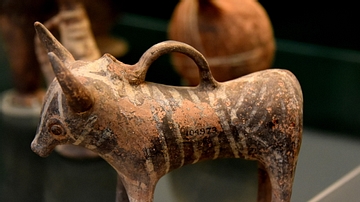
Image
Imported Cypriot Pottery Bull to the Levant
During the Late Bronze Age, the trade contacts established with Cyprus in the preceding period were intensified. This type of bull was very popular in the Levant, either as ornaments or perhaps as feeding bottles. Base ring ware. LBI-II...
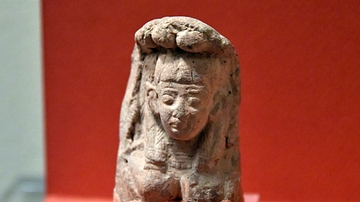
Image
Pottery Figurine from Tell al-Sa'idiyya
This is the upper half of a female figurine. Her facial features, hair, and necklace were carefully made in spite of being small in size. The breasts are prominent. Late Bronze Age, 1550-1200 BCE. From Tell al-Sa'idiyya, Jordan Valley, Jordan...
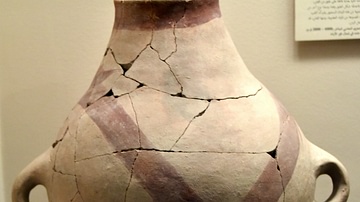
Image
Decorated Pottery Jar from Abu Hamid
This type is similar to the ones used for infant burials, but this one is painted with red strips using iron oxide (hematite), material already known during the Neolithic period for coloring plaster. The Jar was carefully made on a straw...
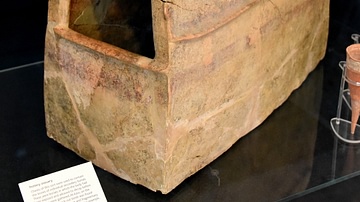
Image
Pottery Ossuary from Azor
Chests of this sort were used to contain the bones of individuals in secondary burials. These were burials in which the body had been exposed and allowed to decay before the bones were gathered. At Azor, on the coast of Israel, a rock-cut...
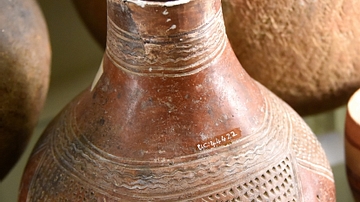
Image
Meroitic Pottery Flask
This is a red burnished globular flask with a wide mouth. The flask has been incised with decoration of horizontal bands at the neck and shoulder above an impressed design of triangles. From cemetery 300 at Meroe, Sudan. Meroitic period...
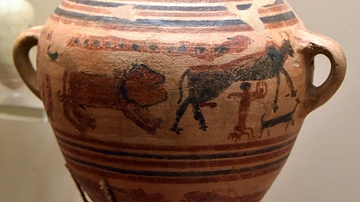
Image
Pottery Jar Showing a Myth from Tell Zar'a
Lare jar painted in red and black on beige. The paintings show animal scenes in two registers. In the lower register, two large snakes lie opposite each other. In the upper one, framed by horizontal lines and a zigzag motif on the jar's shoulder...
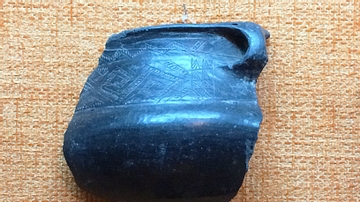
Image
Pottery from Shengavit
Many potsherds have been discovered at the Shengavit settlement and archaeological site in Armenia (c. 3500-2200 BCE). (Shengavit Museum, Yerevan).

Image
Sprinkler Pottery Figurine from Tabqa-Euphrates Area
During the late 3rd millennium BCE, the area of the middle Euphrates developed a distinctive regional culture. Between 1963-1973 CE, an international rescue mission excavated a large number of sites in this region which were threatened by...
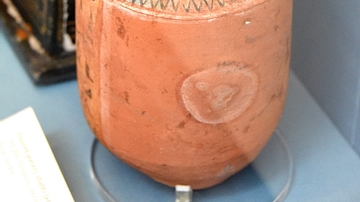
Image
Painted Pottery Shabti-Jar
From Abydos, Egypt. 19th to 20th Dynasties, circa 1295-1070 BCE. (The British Museum, London)
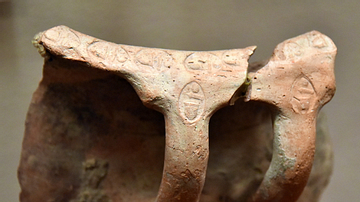
Image
Stamped Pottery Jar from Tell al-Khulayfi
An oval seal impression repeated on the rim and handles of a large jar. Seal impressions are official guarantees of the jars and their contents; therefore, stamped jars indicated the presence of a local administrative center and trade relations...